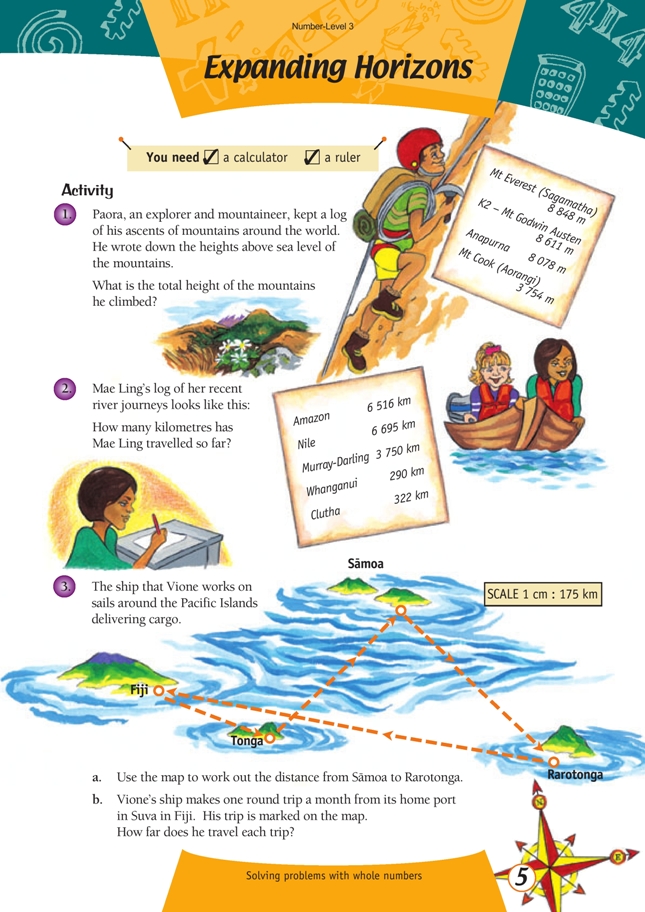This is a level 3 number activity from the Figure It Out series. It relates to Stage 6 of the Number Framework.
A PDF of the student activity is included.
Click on the image to enlarge it. Click again to close. Download PDF (255 KB)
use rounding and estimation to solve addition problems
FIO, Level 3, Number, Book 1, Expanding Horizons, page 5
Ruler
This activity uses interesting real-life large numbers to provide a context for making and solving addition and subtraction problems.
Have the students estimate before calculating.
Questions 1 and 2 may be good challenges as mental calculation for some students. Discuss the “in the head” strategies that some students may have used. Some students may add the thousands first. This is acceptable, for example, “In the thousands, there are three lots of 8 and another 3, that’s 27 thousands. In the hundreds, there is a 6, a 7, and an 8, that’s 21 hundreds. We now have 29 thousand, 1 hundred. Seventeen tens makes another 170. Now we have 29 270. Twenty-one in the ones place will make a total of 29 291 metres.”
You may wish to generate more calculations with additional questions, for example, “What is the difference in height between Mount Everest and Mount Cook?” “Approximately how many times longer than the Clutha is the Nile?”
This activity is a good model to help students generate their own interesting geographical questions.
Use online or book sources, such as atlases or encyclopaedias that feature large numbers.
Answers to Activity
1. 29 291 m
2. 17 573 km
3. These answers are based on measuring from the centre of each circle marking a port (to the nearest centimetre).
a. 1 225 km
b. Approximately 5 250 km
